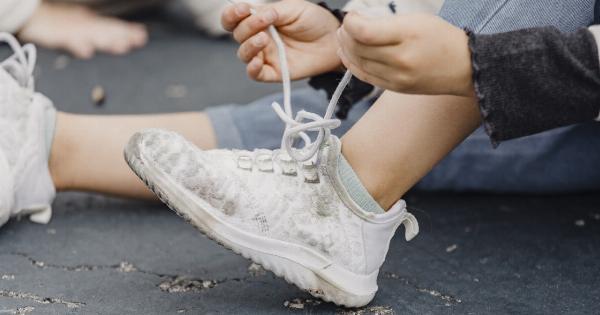High heels have been a fashion staple for centuries, with women flaunting them on the catwalk and in day to day life. However, these stylish shoes pose a huge risk to the health of women’s knees, leading to long-term pain and damage.
This article will delve into why high heels are a danger to your knees, how they cause damage, and what you can do to minimize the risk of injury.
What Are High Heels?
High heels are shoes with a raised heel of more than 2 inches, giving the appearance of longer legs and enhancing the posture of the wearer. They are a cultural icon in women’s fashion, representing sophistication, elegance, and style.
There are many types of high heeled shoes such as pumps, stilettos, wedges, and platforms.
Why Are High Heels a Danger to Your Knees?
High heels alter the way women walk, impacting the alignment of the entire body. When you wear high heels, your body weight shifts towards the ball of the foot, putting extra stress on the knees and causing them to bend forward.
This causes your knees to work harder than they would in flat shoes, leading to strain or even injury. The higher the heel, the greater the impact on the knees. Research has shown that walking in high heels can increase knee joint pressure by up to 26%.
How Do High Heels Cause Knee Damage?
Wearing high heels regularly can cause a range of knee-related issues including:.
- Arthritis: The extra pressure on the knees can cause arthritis, where the cartilage that protects the joint breaks down.
- Torn cartilage: The constant bending of the knees when wearing high heels can cause the cartilage to tear.
- Tendinitis: The increased pressure on the knees can cause tendinitis, which is the swelling of the tendons around the knee.
- Bursitis: Wearing high heels can also cause bursitis, which is the inflammation of the fluid-filled sacs around the knee joint.
These conditions can cause long-term pain and damage to the knees, making it difficult to perform daily tasks and hindering mobility.
What Can You Do to Minimize the Risk?
Here are some tips to minimize the risk of knee damage when wearing high heels:.
- Choose lower heels: The lower the heel, the less pressure on the knees. Try wearing heels that are no more than two inches in height.
- Wear high heels in moderation: Don’t wear high heels every day. Mix up the shoes you wear to give your knees a break.
- Try platforms: Platforms have a solid base that can offset the pressure on the knees. Choose a shoe with a chunky heel or wedge, as they provide more support.
- Insoles: Insoles can provide extra cushioning and support to the feet, helping to reduce the impact on the knees.
- Stretch: Stretching before and after wearing high heels can help to reduce the risk of injury. Focus on the muscles that support the knee, such as the quadriceps and hamstrings.
- Flat shoes: Opt for flats when going for long walks or when performing tasks that require standing for long periods.
The Bottom Line
High heels may look stylish, but they come with a huge risk of knee damage. The constant bending of the knees when wearing high heels can cause a range of knee-related problems, including arthritis, torn cartilage, tendinitis, and bursitis.
To minimize the risk of injury, it’s essential to choose lower heels, wear high heels in moderation, try platforms, wear insoles, stretch, and opt for flat shoes when standing for long periods. By taking steps to care for your knees, you can continue to enjoy wearing high heels without suffering long-term damage.


























